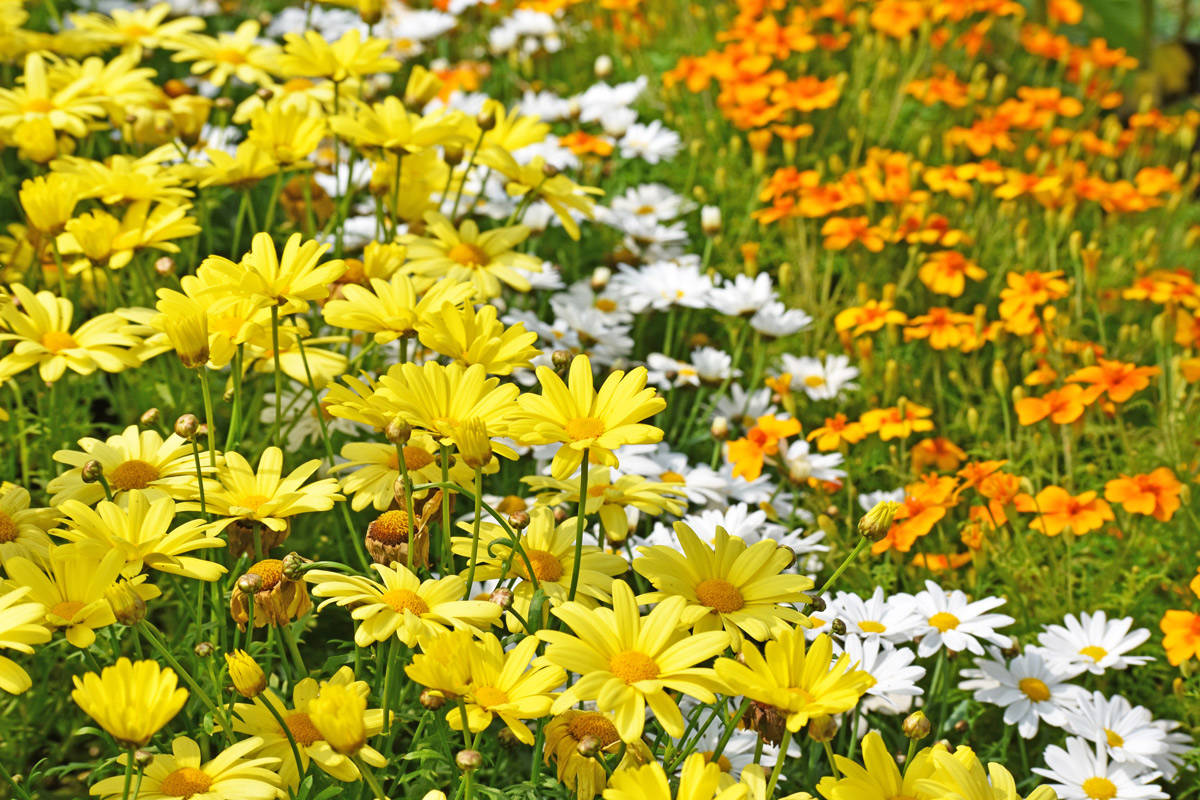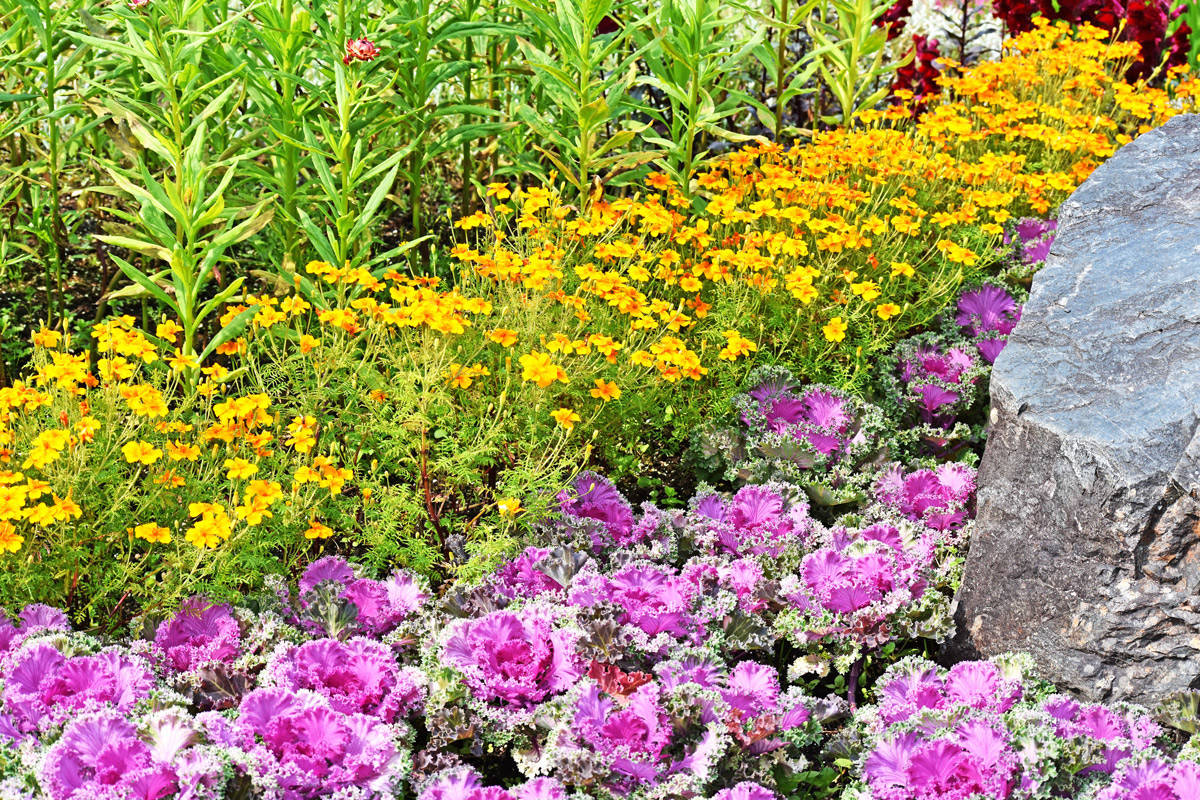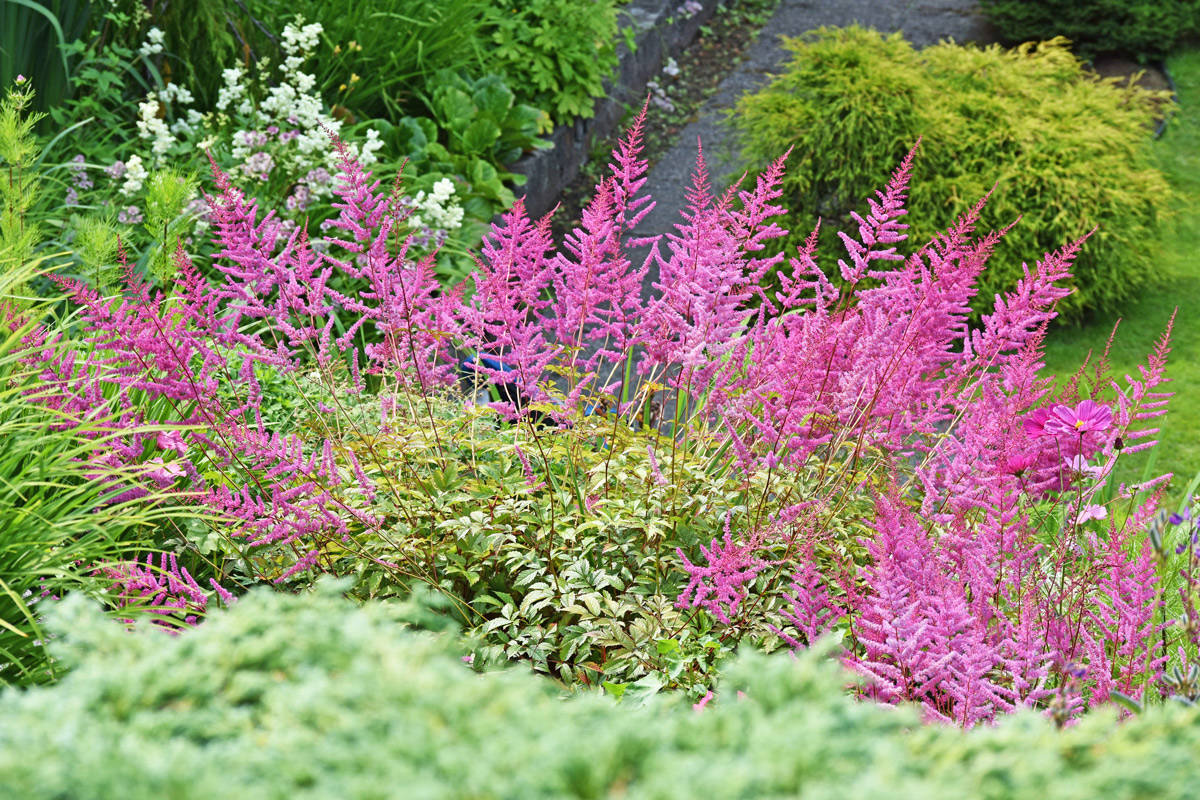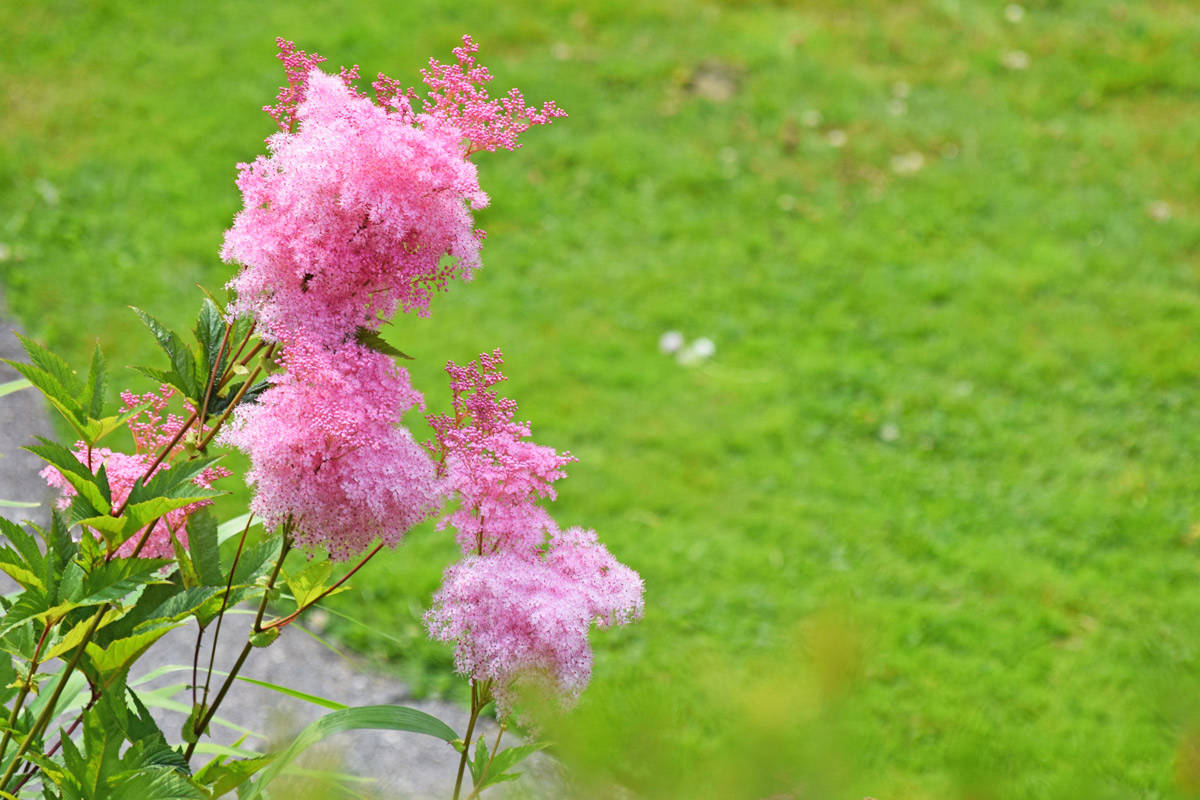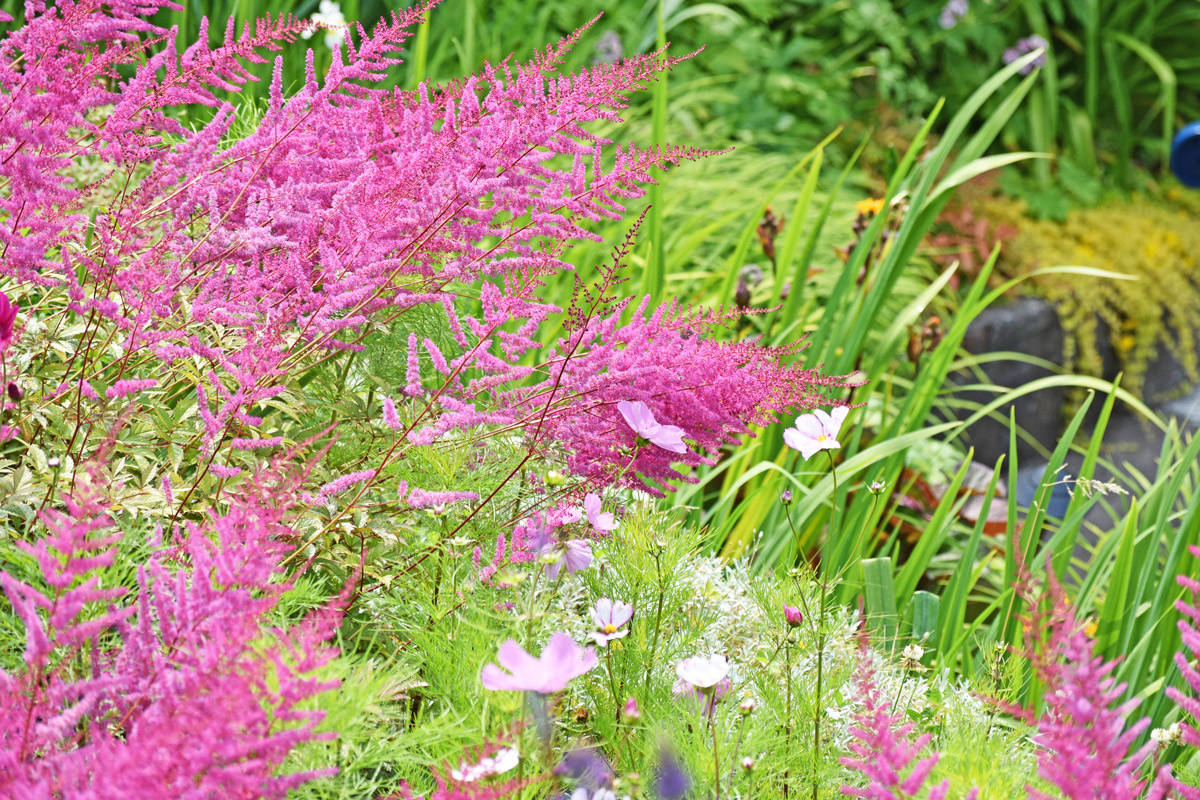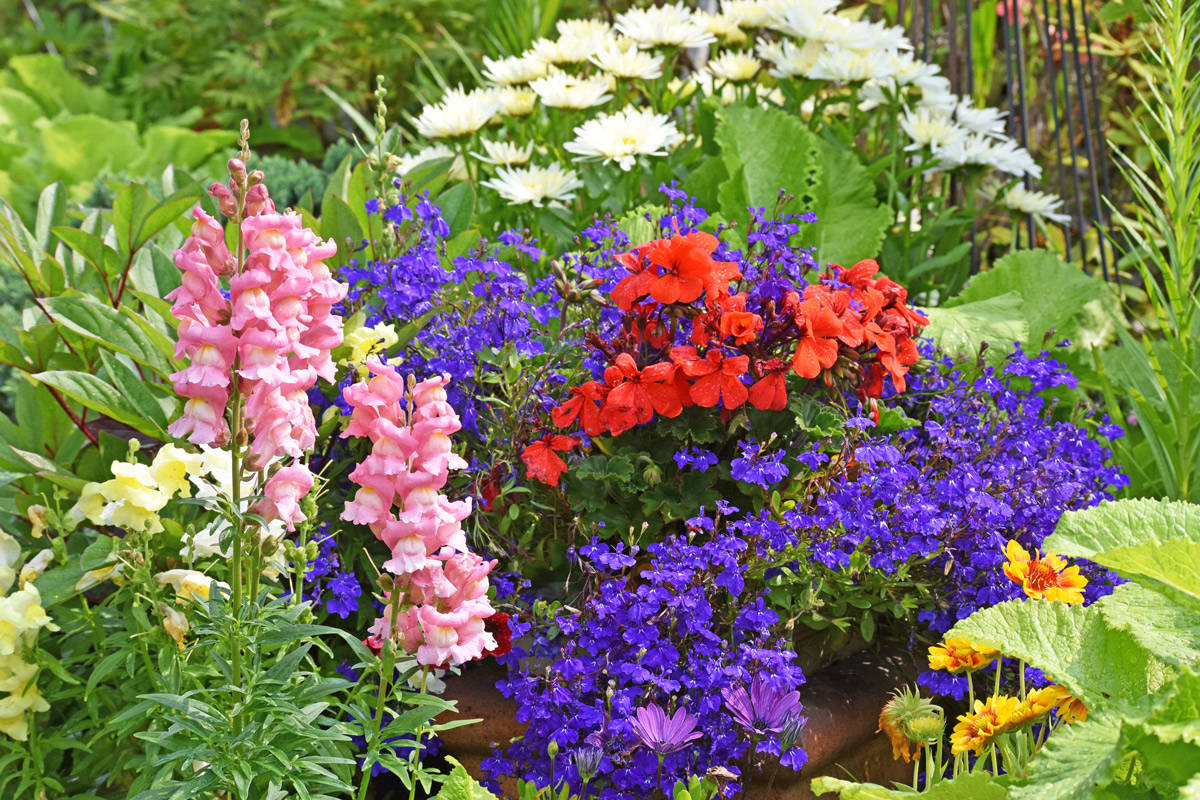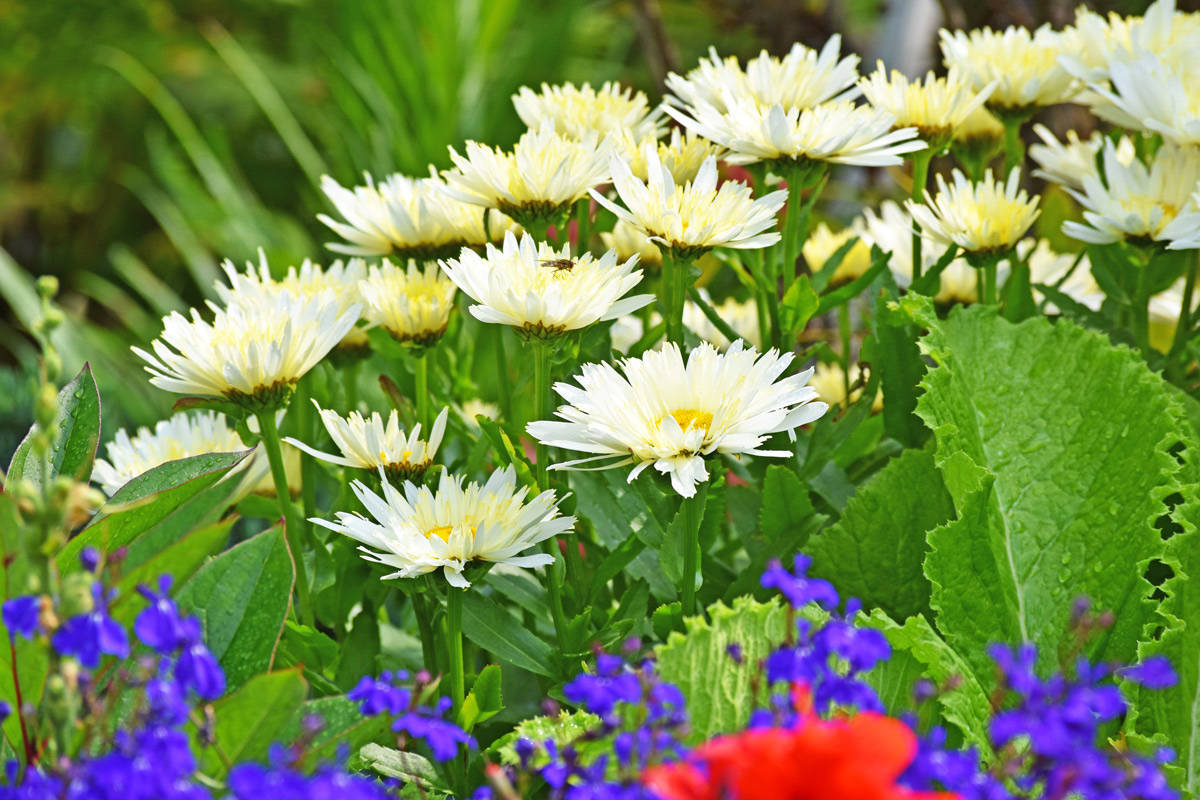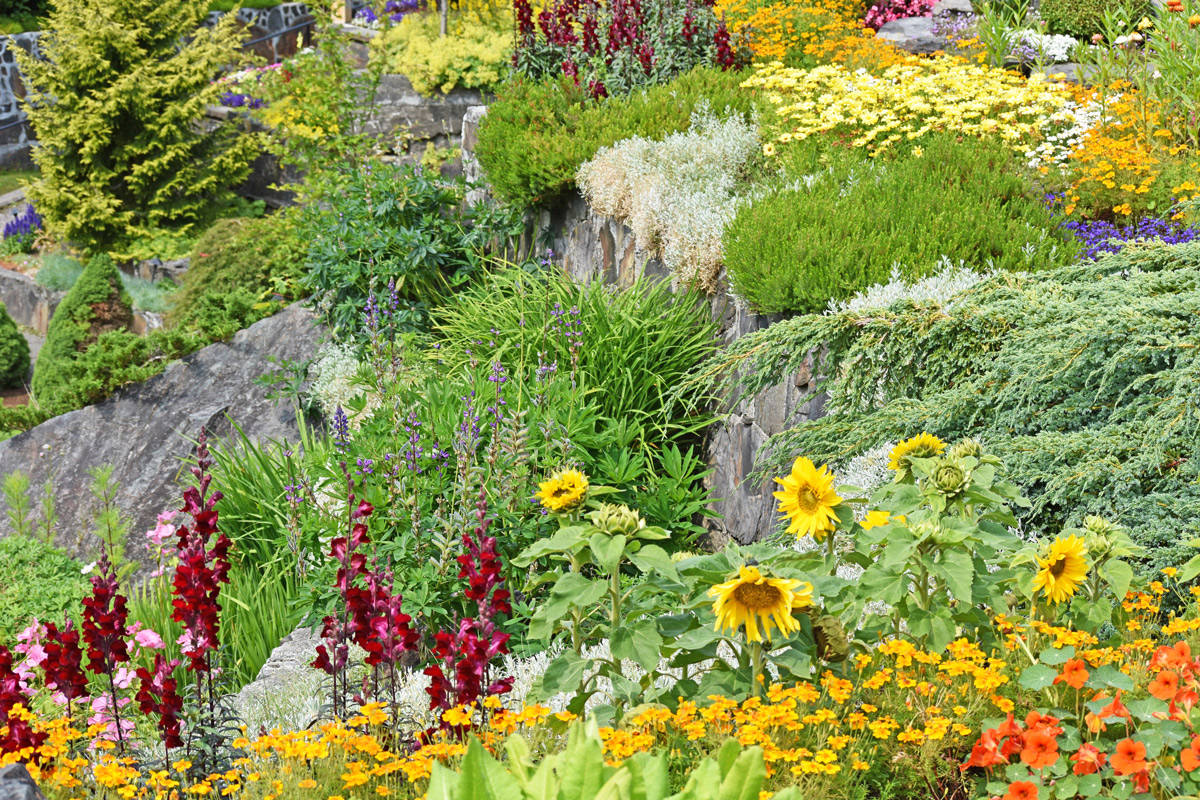Gardening doesn’t come easy in the north.
But despite the cold wet spring a leisurely stroll around the community shows savvy, green-thumbs prevailed. The city is in full bloom, painted with a myriad of colours.
In the spring, it’s about watching the weather, like Sheri Pringle did from Rupert Lawn and Garden, who planted her fuchsia baskets before anything else.
Pringle’s advice is to remember a deer’s palate is ever changing. What it likes this year it might not like the next.
READ MORE: The Sunken Gardens in Prince Rupert
Succesful gardening is about nurturing, feeding and tending. It’s about soil requirements, planning, maintaining and weather watching.
Watering
President of the Prince Rupert Garden Club, Andrée Fawcett, said she often hears ‘Why aren’t my trees doing well?’
“I always get a blank stare when I ask the person if they water them enough,” Fawcett said.
She explains that even though the perception is it rains in Prince Rupert all the time, it actually doesn’t rain enough for gardens at this time of year.
“These sorts of misty rains don’t count. They just frizz your hair and leave, not water your garden. Listen to what the soil is saying. Be diligent with watering, especially if you’ve planted new trees, new shrubs or anything big.” said Fawcett. “And don’t plant deer candy like roses, tulips or hostas, but do plant for the pollinators.”
PODCAST: Garden Tips with Andrée Fawcett
Pollinators
Pollinators are not just bees but hummingbirds and butterflies as well.
There are many plants that are bee friendly. Fawcett lists off bee balm, daisies, snap dragons, fox glove and lupines.
“All those are good. Butterflies and bees love daisies. Hummingbirds and bees love foxglove and snaps. Cardinals are especially great for hummingbirds,” Fawcett said. Bees are attracted to both nectar and pollen producing plants.
“They need to take pollen to their hives to feed their queen and the nectar for the honey,” she said.
Soil
Every species of plant thrives in different soil conditions.
“The soil in Prince Rupert is very acidic.” Fawcett said. “A lot of plants can grow in our soil. In a vegetable garden you would add lime plus compost. In a garden bed adding manure, such as mushroom and steer, is good as well as compost.”
Newbie Tip
Fawcett’s garden tip for new gardeners is to ‘keep it simple.’ Plant simple annuals such things as begonias, basic snap dragons, pansies and daisies until the gardener learns what thrives in the area.
“Rhododendrons do spectacularly here,” Fawcett said. “And they typically start blooming in January or February.”
This year Fawcett is experimenting with a magnolia tree and has had great success.
When asked who had the nicest garden in the city this year Fawcett said, “They are all simply beautiful.”
newsroom@thenorthernview.com
Like us on Facebook and follow us on Twitter
